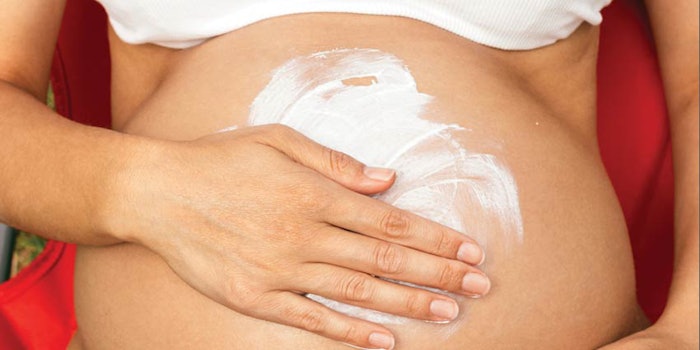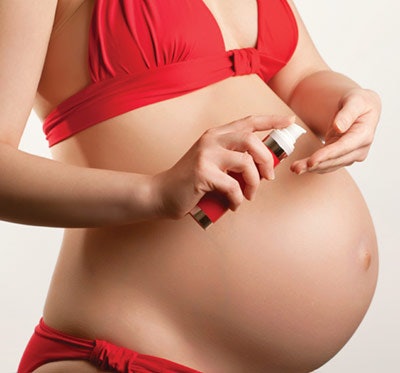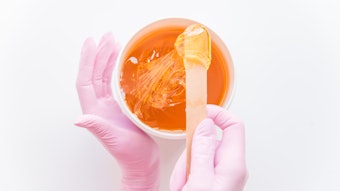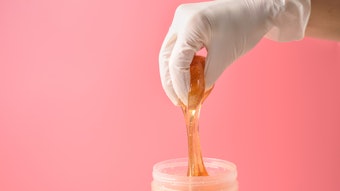
Pregnancy brings about a whirlwind of changes to the skin and body. Many of the physiological changes experienced during pregnancy are a direct response to rising hormone levels. Although these hormones are instrumental in the development of the baby, they can bring with them a host of other body and skin changes, which this article will discuss.
Estrogen and Progesterone
Estrogen and progesterone significantly increase over a relatively short period. The amount of estrogen that a woman’s body produces in a single pregnancy is immeasurably greater than the amount produced in a lifetime of a woman when not pregnant. Besides the possible mood swings and nausea, the increase of estrogen boosts vascularization of the uterus and placenta. This facilitates the flow of nutrients to accommodate the growing fetus.
The high progesterone levels along with the relaxin hormone weaken the normally solidified joints and ligaments throughout the body. This is why it is important for pregnant women to be especially cautious with exercise and intense physical activity to avoid any potential injuries. At the same time, progesterone helps the development of a thick and strong lining of the uterus that can expand and support the growing size of the baby. It prepares the mammary glands, in conjunction with rising estrogen, for milk production.
Skin During Pregnancy
Pregnancy is often associated with a healthy glow, but that glow is not absolute and is balanced by a long list of not always comfortable or necessarily esthetic side effects. The erratic behavior of the rising hormones can have a negative impact on skin, sometimes worsening pre-existing skin conditions, such as rosacea, acne or atopic dermatitis. Pregnancy can make skin reactive to ingredients or even environments that previously had no effect. Oddly enough, it can also improve pre-existing skin conditions in some cases.
Pregnancy may promote healthier skin, hair and nails, but it is often accompanied by acne, unwanted hair growth, hair thinning, exacerbated existing skin conditions, skin pigmentation, spider veins and stretch marks.
Acne
Progesterone stimulates oil-producing sebaceous glands and sweat-producing sudoriferous glands. This initiates a multiplied production of sweat and oil. This is beneficial to dry skin, as it will be able to naturally better lubricate and moisturize itself. Ultimately, either skin will have that “pregnancy glow,” or a build-up of excess oil on the surface. The latter can become a breeding ground for bacteria and trigger acne breakouts on the face, back and chest.
Each pregnancy is mutually exclusive. The symptoms in any single trimester can vary significantly from one pregnancy and person to the next. Acne is an example. For some women, all the hormone fluctuations can clear up acne. For others, it can worsen the skin condition. To encourage skin wellness and avoid breakouts, it is necessary to stick to a gentle but appropriate home care regimen. This includes daily cleansing and moisturizing with non-irritating products that are rich with antioxidants, minerals, vitamins and omegas that will nourish the skin. Exfoliating and using a masque once a week will smooth and enhance skin texture and complexion.
Hair
Throughout pregnancy, the body and all its systems are in a constant state of juggling to support the rising levels of many different hormones. The shift in hormonal balance can promote healthier and thicker hair by prolonging the anagen (growth) phase of hair. Simultaneously, it may cause excessive hair growth, even in unwanted places. Every woman’s body responds differently from one pregnancy to another.
On the flip side, pregnancy can cause an increased amount of hair follicles to transition into a telogen (resting) phase of hair growth, which would actually trigger hair loss.
Pigmentation
Skin pigmentation is an undesirable side effect of pregnancy that happens because of melanocyte-stimulating hormones in high gear. Sensitivity to the sun is considerably greater. Even minimal unprotected sun exposure forces melanin, the dark pigment produced by melanocytes, to the surface of the skin with ease. One of the most common forms of pregnancy-related hyperpigmentation is melasma, also known as the mask of pregnancy or chloasma. This condition is recognized as dark patches most commonly on the forehead, nose, cheeks and chin. This type of pigmentation often clears up on its own within a few months after the baby is born, but skin lightening treatments may be needed. The best precaution is to use sun protection with a minimum SPF 30 and reapply it often. Other areas of the body that typically darken with pregnancy are existing freckles or moles and the skin around the nipple called the areola. The skin color remains dark even post pregnancy until the mother stops breastfeeding the baby.
Linea nigra is another example of a skin color alteration. It is a darkened line of skin thatruns from the abdomen down to the pubic bone. The line begins to emerge approximately halfway through a pregnancy and continues to darken. A few months post-delivery, the line usually fades on its own.

Stretch marks
The obvious physical transformation in pregnancy is a growing belly, with the uterus expanding 500 times its normal size. Simultaneously, the breasts enlarge as well in preparation for breastfeeding. Skin is incredibly elastic, and can actually stretch up to at least six feet. Nonetheless, when growth is more rapid than the elasticity of the skin, collagen and elastin fibers become strained causing stretch marks.
Stretch marks commonly develop on the stomach, breasts and hips. Keeping the skin deeply moisturized and nourished throughout the pregnancy will go a long way, and is a good preventative measure.
Spider and Varicose Veins
Pregnancy increases blood flow to the skin. This too contributes to the “pregnancy glow.” It is also responsible for broken capillaries, spider veins and varicose veins that can appear, especially if there is a family history of varicose or spider veins. The higher amount of blood circulating through the veins puts pressure on the capillaries and causes them to burst or bulge. They may not be esthetically pleasing, especially when small bluish-red webs show up in obvious areas like on the cheeks or uncomfortable protruding veins on the legs. Usually, they are harmless and go away on their own several months post-partum.
To prevent or reduce the symptoms of spider and varicose veins, there are some notable safeguards. Having a sufficient amount of vitamin C is essential for vein flexibility. It promotes healthy veins and supports the flow of blood. Moving around, not standing or sitting for long periods of time, avoiding crossing of the legs, and wearing compression stockings or leggings will inhibit varicose vein progression.
Irritation
Severe itchy skin rashes or hives around the abdomen that can spread to other areas of the body are skin conditions unique to pregnancy called pruritic urticarial papules and plaques of pregnancy (PUPPP). The stretching of the skin, which causes the uncomfortable itching and dryness, may be a culprit of PUPPP. Uncomfortable red raised stretch marks surrounding the belly are one of the most obvious signs of possible PUPPP. It is extremely unpleasant for the pregnant woman, especially that it occurs during the most challenging period, toward the end of the third trimester.
Luckily, most skin irritation goes away on its own after the delivery of the baby. To ease discomfort, inflammation can be soothed with a colloidal oat bath or with a 1% hydrocortisone ointment.
Natural Remedies
Herbal and essential oil remedies have been used for centuries throughout the world to ease and lessen pregnancy symptoms and prepare the body for laboring. Many botanical and herbal extracts work to promote a healthy pregnancy. It is always advisable to consult a doctor before introducing any home therapies when pregnant.
Raspberry. One recommended and safe extract that is beneficial in the second and third trimester is red raspberry leaf. The tea supplement strengthens and exercises the uterus in preparation for delivery.
Ginger. Ginger root is great to alleviate nausea or any stomach uneasiness especially in the first and third trimester.
Essential oils. Essential oils can be used to reset the body and the mind during pregnancy. Simply rubbing a few drops in the palms and inhaling the aromas can go a long way: Lavender is calming and assists in relaxation while peppermint or citrus are energizing and uplifting. The medicinal benefits of tea tree oil in combination with a gentle moisturizer will help balance skin and help prevent potential breakouts, but it should not be used in the third trimester.
Prepare Clients
Pregnancy is a delicate time for a woman, and the experience for many is overall positive. For some, it can be stressful and overwhelming with all of the unexpected changes. Being knowledgeable is a sensible preparation. The many physiological changes a woman undergoes through pregnancy often reverse back to a normal state after delivery. One certainty about pregnancy is the miraculous transformational capability of the female body.
Pregnancy increases blood flow to the skin, but it’s also responsible for varicose veins.












